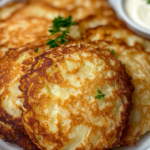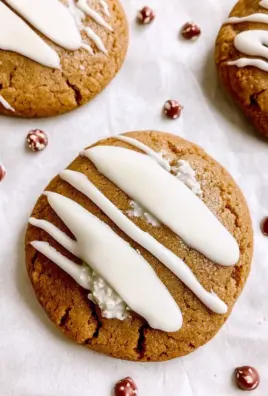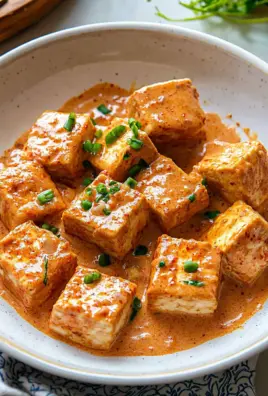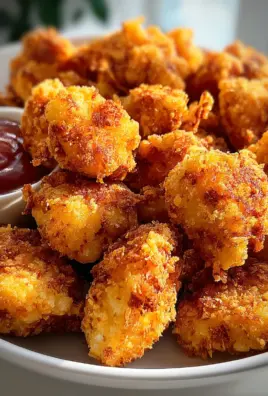German Potato Pancakes, also known as Kartoffelpuffer, are a beloved traditional dish in German cuisine. These golden, crispy pancakes are made from freshly grated potatoes and onions, fried to perfection until the outside is crunchy and the inside is tender. Whether served as an appetizer, snack, or side dish, these pancakes offer rich flavor and satisfying texture that appeals to all ages.

This recipe captures the essence of German comfort food, using simple ingredients and easy-to-follow steps to create a versatile dish that can be enjoyed sweet or savory. Pair them with applesauce for a classic experience, or serve with sour cream and herbs for a more robust flavor profile.
Why This Recipe Works
This German Potato Pancakes recipe stands out for its:
- Crispy texture: The double-frying technique creates an extra crunch.
- Minimal ingredients: Made with pantry staples and fresh produce.
- Authentic flavor: Traditional German preparation with room for creative variations.
- Quick preparation: Ready in about 30 minutes from start to finish.
- Flexible use: Great as an appetizer, side dish, or part of a brunch spread.
These pancakes are a great vegetarian option and can be customized to suit different dietary needs or flavor preferences.
Preparation Phase and Tools to Use
To achieve the best results, set up your cooking area with the following tools and equipment:
Essential Tools and Equipment
- Box grater (large side): For shredding potatoes and onions to the perfect texture.
- Large mixing bowl: To combine and mix ingredients evenly.
- Cheesecloth or fine-mesh strainer: To remove excess moisture from the grated vegetables.
- Non-stick or cast-iron skillet: For even heat distribution and crisp frying.
- Spatula: For flipping the pancakes without breaking them.
- Paper towels: To absorb excess oil after frying.
Why Each Tool Matters
Each piece of equipment plays a specific role:
- Box grater ensures consistent texture that fries evenly.
- Cheesecloth helps extract water, which is key to a crisp finish.
- Cast iron or non-stick skillet prevents sticking and browning unevenly.
- Spatula aids in careful flipping, especially important when the batter is delicate.
- Paper towels keep the pancakes from becoming soggy after cooking.
Preparation Tips
- Choose starchy potatoes like russets for maximum crispiness.
- Drain as much liquid as possible from the grated potatoes to avoid soggy results.
- Mix the batter just before frying to keep the potatoes from oxidizing.
- Heat the oil before adding batter to ensure immediate crisping.
Ingredients List
Organized for clarity and efficiency:
Fresh Produce
- 1 lb russet potatoes, peeled and grated
- 1 small yellow onion, grated
Seasonings and Pantry
- Pinch of salt
- Pinch of black pepper (optional, for savory pancakes)
- 3 tablespoons all-purpose flour
Binding Agent
- 1 large egg
Cooking
- Vegetable oil for frying
These basic ingredients combine to create rich flavor and perfect texture.
Step-by-Step Instructions
Follow these steps for authentic German Potato Pancakes:
- Grate potatoes and onion using the large holes of a box grater. Place into a large bowl.
- Remove excess moisture by pressing the grated mix through cheesecloth or a fine strainer. This is crucial for crispiness.
- Add a pinch of salt, pepper (if using), flour, and the egg to the grated mix. Mix thoroughly by hand until a thick batter forms.
- Heat 1 to 2 tablespoons of vegetable oil in a skillet over medium heat until shimmering.
- Scoop about 2 tablespoons of batter for each pancake into the hot skillet. Flatten gently with the back of a spoon.
- Fry for 3 to 4 minutes per side, or until deep golden brown and crispy. Avoid flipping more than once.
- Transfer cooked pancakes to a paper towel-lined plate to drain oil.
- Once all are fried, re-fry each pancake for 30 to 60 seconds per side to enhance the crunch.
- Serve immediately while hot and crispy. Pair with applesauce, sour cream, or yogurt-based sauces.
Serving Suggestions and Pairings for German Potato Pancakes
Once your German Potato Pancakes are hot and crispy from the pan, the next step is knowing how to serve and complement them. These golden, savory fritters are versatile and pair well with a variety of accompaniments. Whether you prefer a sweet contrast or a hearty, savory addition, there are endless ways to enjoy them.
Serving Suggestions
German Potato Pancakes can be served in numerous ways, depending on the occasion, time of day, or personal preference. Here are several popular and creative ideas for serving them:
Traditional German Style
- Applesauce: This sweet and tangy classic is the most traditional accompaniment. The combination of savory potato and sweet apple creates a satisfying balance.
- Sour cream: A cool, tangy topping that complements the crispiness of the pancake.
- Chives or green onions: Sprinkle on top of sour cream for added freshness and mild bite.
Brunch or Breakfast Additions
- Fried eggs: Add a runny fried egg on top for a hearty breakfast option.
- Smoked salmon: Elevate the dish by adding slices of smoked salmon, dill, and a dollop of crème fraîche.
- Avocado: Serve with sliced avocado and a squeeze of lemon for a modern twist.
Savory Toppings
- Caramelized onions: Add depth and sweetness to the dish.
- Grated cheese: A sprinkle of sharp cheese adds richness.
- Yogurt-herb sauce: Greek yogurt mixed with dill, garlic, and lemon juice makes a refreshing dip.
Common Mistakes to Avoid
Achieving the perfect German Potato Pancakes takes attention to detail. Avoid these common missteps to ensure success every time.
1. Not Removing Enough Moisture
Failing to remove excess water from the grated potatoes will lead to soggy pancakes. Always squeeze the potato-onion mixture thoroughly before mixing with other ingredients.
2. Using the Wrong Type of Potato
Starchy potatoes like russet are ideal. Waxy potatoes won’t give you the same crispy texture.
3. Overcrowding the Skillet
Adding too many pancakes to the skillet at once drops the oil temperature and causes uneven cooking. Fry in small batches for the best results.
4. Not Heating Oil Properly
If the oil is not hot enough, the pancakes will absorb too much and turn greasy. Wait until the oil shimmers before frying.
5. Skipping the Second Fry
The final quick re-fry is key to getting that extra crispiness. Don’t skip it.
6. Flipping Too Often
Flip the pancakes only once during cooking. Constant flipping disrupts the crust formation and leads to breakage.
How to Perfect the Recipe Every Time
Improving consistency with German Potato Pancakes comes down to mastering a few core techniques. Here are some ways to ensure the best results:
- Grate potatoes evenly using the large holes of a box grater.
- Mix and fry immediately after grating to prevent discoloration and sogginess.
- Keep the batter cool if working in warm conditions.
- Use enough oil to coat the pan but not submerge the pancakes.
- Drain properly on a paper towel or wire rack to remove excess oil.
Consistency and timing are crucial when frying. Once you’ve made them a few times, you’ll get a feel for the ideal batter texture and frying time.
Recommended Side Dishes
To create a full meal or buffet spread featuring German Potato Pancakes, pair them with these delicious side dishes:
1. Applesauce
A classic pairing that provides sweetness and contrast. Homemade or store-bought works equally well.
2. Sour Cream and Chives
Cool and creamy, this combination enhances the richness of the pancakes.
3. Cucumber Salad (Gurkensalat)
A fresh German salad made with thinly sliced cucumbers, vinegar, and dill. Adds a cooling, acidic balance.
4. German Red Cabbage (Rotkohl)
Braised red cabbage with apples and spices offers a sweet-savory contrast and adds vibrant color to your plate.
5. Bratwurst or Kielbasa
Add a meaty component by serving grilled sausages. A filling and hearty match for the crisp pancakes.
6. Warm Lentil Salad
Protein-rich and flavorful, lentils dressed with mustard and herbs complement the dish beautifully.
7. Roasted Vegetables
A simple tray of seasonal roasted vegetables adds color, nutrition, and variety.
8. Pickled Beets or Sauerkraut
Both options provide acidity and texture, cutting through the richness of the fried pancakes.
These sides help turn German Potato Pancakes from a snack into a balanced meal.
Recipe Tips and Tricks
Whether you’re making German Potato Pancakes for the first time or looking to refine your technique, the following tips will help you create consistently crispy and flavorful results.
Use High-Starch Potatoes
Russet or Idaho potatoes work best due to their higher starch content. This helps bind the batter and creates a crispy texture when fried.
Always Remove Excess Moisture
After grating the potatoes and onion, squeeze the mixture using a clean kitchen towel, cheesecloth, or fine mesh strainer. Excess moisture in the batter will cause sogginess and uneven cooking.
Mix and Cook Immediately
Potatoes begin to oxidize quickly, turning brown when exposed to air. To maintain a fresh color and texture, mix and fry the batter right after preparing it.
Add Flavor Boosters
Customize the flavor of your German Potato Pancakes by incorporating one or more of the following:
- Minced garlic
- Grated carrot or zucchini
- A dash of smoked paprika
- Fresh herbs like parsley or dill
- Crumbled cheese such as feta or parmesan
These additions can enhance both visual appeal and taste while keeping the integrity of the traditional recipe.
Storage Instructions
Although German Potato Pancakes are best enjoyed fresh, you can store leftovers properly to preserve texture and flavor.
Refrigeration
- Allow pancakes to cool completely.
- Store in an airtight container lined with paper towels to absorb excess oil.
- Refrigerate for up to 3 days.
Freezing
- Arrange cooled pancakes on a baking sheet in a single layer.
- Freeze for 1–2 hours until solid.
- Transfer to a freezer-safe bag or container, separating layers with parchment paper.
- Store for up to 1 month.
Proper storage ensures the pancakes remain crisp after reheating and prevents sogginess or freezer burn.
Reheating Instructions
To restore the crisp texture of German Potato Pancakes, reheating method matters.
Oven
- Preheat oven to 375°F (190°C).
- Place pancakes on a baking sheet lined with parchment paper or a wire rack.
- Bake for 10 to 12 minutes, flipping halfway through.
Skillet
- Heat a small amount of oil in a non-stick pan over medium heat.
- Reheat each pancake for 2–3 minutes per side until crisp and hot.
Air Fryer
- Preheat air fryer to 350°F (175°C).
- Place pancakes in a single layer.
- Cook for 4–6 minutes, checking halfway.
Avoid using a microwave, as it can soften the pancakes and make them rubbery rather than crisp.
Frequently Asked Questions (FAQs)
What are German Potato Pancakes called in German?
They are traditionally known as Kartoffelpuffer or Reibekuchen, depending on the region.
Are they the same as latkes?
While similar, latkes often include matzo meal and baking powder and are commonly associated with Jewish cuisine. German Potato Pancakes are simpler, typically made with potatoes, onion, egg, and flour.
Can I make these gluten-free?
Yes. Substitute the all-purpose flour with a gluten-free alternative like rice flour, chickpea flour, or potato starch. The texture will remain similar if moisture is well-controlled.
Can I make the batter in advance?
It is not recommended to store the batter for long periods, as the potatoes may turn gray and release more moisture. If necessary, refrigerate the batter for no more than one hour and stir before frying.
How do I keep them warm for serving?
Place cooked pancakes on a wire rack in a low oven (200°F) while finishing the batch. This keeps them warm and crispy until ready to serve.
Can I bake them instead of frying?
While baking is possible, the texture will be less crispy. To bake, preheat the oven to 425°F, brush both sides with oil, and bake for 20 to 25 minutes, flipping halfway.
What toppings go best with them?
Popular toppings include applesauce, sour cream, yogurt-herb dip, chives, caramelized onions, or smoked salmon. The dish pairs well with both sweet and savory flavors.
Conclusion
German Potato Pancakes are a timeless and adaptable dish that fits any table, whether you’re hosting a brunch, preparing a side for dinner, or simply craving a crispy snack. Their golden texture, traditional preparation, and versatile flavor make them a staple in German cuisine and a favorite around the world.
With the right preparation and a few essential tips, you can master this simple yet satisfying recipe. Whether served with applesauce for a classic touch or dressed up with modern toppings, German Potato Pancakes will always deliver comfort and flavor in every bite.
Ready to bring a taste of Germany into your kitchen? Try this recipe today and enjoy the irresistible crunch of a homemade classic.
Let me know if you’d like a printable version, internal links for your WordPress post, or help turning this into a recipe card.
German Potato Pancakes
Ingredients
- 1 lb russet potatoes
- 1 small yellow onion
- Pinch of salt plus more for seasoning
- Pinch of black pepper for savory pancakes
- 3 tbsp all-purpose flour
- 1 large egg
- Vegetable oil for frying
Instructions
- Wash and peel the potatoes. Grate them into a bowl using the large side of a box grater. Grate the onion into the same bowl.
- If excess liquid pools in the potato mixture, drain off as much as possible.
- Add salt, pepper (if making savory pancakes), flour, and egg to the potato-onion mixture. Mix thoroughly with your hands until a thick batter forms.
- Heat 1-2 tablespoons of vegetable oil in a large skillet over medium heat.
- Scoop about 2 tablespoons of the potato batter into the hot oil for each pancake, flattening slightly with the back of a spoon or spatula.
- Fry for 3-4 minutes per side until deeply golden brown and crispy. Transfer to a paper towel-lined plate.
- Once all pancakes are fried, re-fry them for an additional 30-60 seconds per side for extra crunch.
- Serve immediately while hot and crispy. Enjoy with applesauce, brown sugar, sour cream, or yogurt sauce.




Leave a Comment